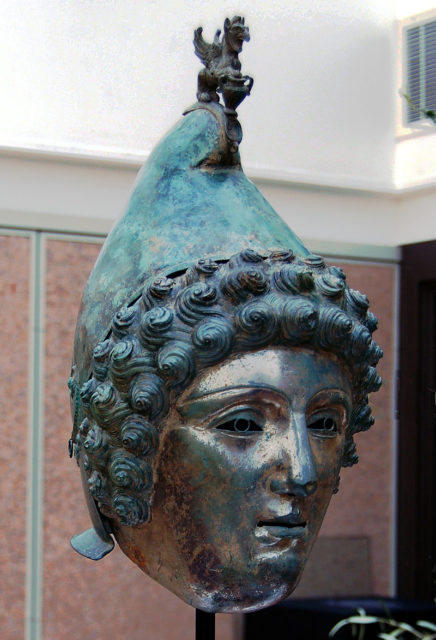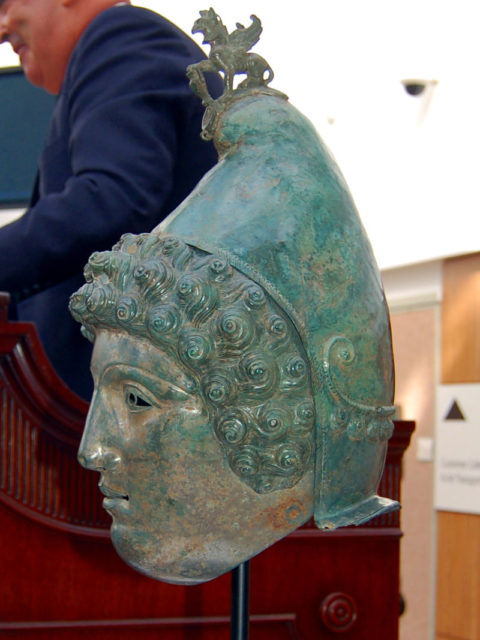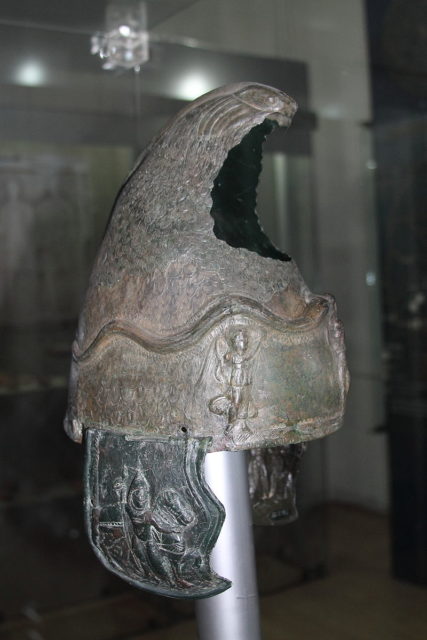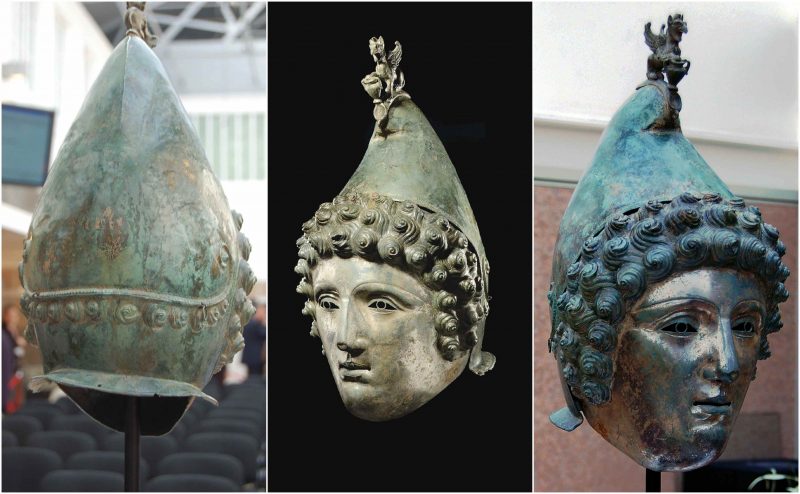In May of 2010, a Roman cavalry helmet, dating from the late 2nd or early 3rd century AD, was found in pastureland on a farm owned by Eric Robinson at Crosby Garrett in Cumbria, England. An anonymous metal detectorist from Peterlee, County Durham found the copper alloy helmet and visor. He and his father had been exploring two nearby fields for a few years but had found only Roman coins and other small artifacts.
It was later discovered that earthworks and a Roman settlement had once stood not far from the discovery site. An old road led up to the location of an old Roman military fort just a few miles away. The fort would have stood along the route to the northern frontier of Roman Britain and would have frequently been used by the Roman army.

The earthworks were part of a 1,600-foot-long enclosure where buildings had once stood, surrounded by ditches which combined both native British and Roman methods of fortification. The area had been under cultivation, and animal remains were found on the site, indicating that livestock, including sheep, goats, and pigs, was being raised there. Roman pottery pieces that were found exhibit evidence of Roman customs but the settlement may have been there for as much as 1,000 years before the helmet was buried. Later, Tullie House/PAS excavations found copper and iron objects, beads, and Roman coins dating from 330 to 337 AD.
The helmet was found in sixty-seven pieces and was originally thought to be a Victorian artifact. The griffin had become detached, but the visor was mostly intact. The helmet had been placed on two slabs of rock deep inside a pit that was filled in with a layer of soil, another large rock, and more soil.

The Crosby Garrett helmet is a copper, two-piece Roman cavalry helmet. The visor, which was attached by a hinge, bears the sculpted face of a handsome young Roman soldier surrounded by layers of curls, possibly meant to depict Paris of Troy. The headpiece is a copper Phrygian cap topped with a winged griffin placing his front paw on an amphora. A leather strap kept the helmet in place. It is believed to be a ceremonial helmet rather than one used for combat.
Only two other Roman helmets with at least partially complete visors have been found in Britain: the Newstead Helmet, found at the site of a Roman fort near Melrose in Roxburghshire, Scotland in 1905; and the Ribchester Helmet, found in Ribchester, Lancashire, England, in 1796.
The Crosby Garrett helmet was reported to the Portable Antiquities Scheme but was not declared treasure because single artifacts made of non-precious metal are not included in the 1996 Treasure Act. The landowner and finder shared equal ownership of the artifact and could do what they wished with it, so they decided to place it up for auction.

Christie’s of London hired an independent conservator, Darren Bradbury, to restore the helmet and visor so it could be sold. Christie’s was asked to delay the work so a scientific examination could be completed, but the request was denied, potentially causing information surrounding the helmet’s burial to be lost. Before restoration began, the British Museum was able to perform an X-ray fluorescence spectrometry to determine the materials used in the construction of the headpiece.
In October of 2010, when the helmet was put on the auction block, the initial estimate was exceeded almost immediately. Six bidders drove the price past a million pounds and Tullie House Museum and Art Gallery, which wanted to use the helmet as a centerpiece for their new Roman Frontier Gallery scheduled to open in 2011, had to drop out at the £1.7 million they had raised. Two remaining bidders pushed the bid past £2 million. The winner, a UK art collector who was bidding by phone, paid a total of £2,330,468.75, including the buyer’s premium and VAT – the U.S. equivalent of $3,699,726.14 in 2010.

Tullie House had painstakingly raised a lot of money to purchase the artifact for public display, but the staggering amount of money available to the private sector allowed the museum to be outbid. This situation provoked calls for the Treasure Act to be revised, but British Archaeology felt the circumstances probably would have resulted in the discovery being outside the scope of even an amended act.
The owner loaned the helmet to the Tullie House Museum and Art Gallery. They were able to include it in their exhibition of Roman Calvary artifacts that is touring museums along one hundred and fifty miles of Hadrian’s Wall throughout the spring of 2017.
